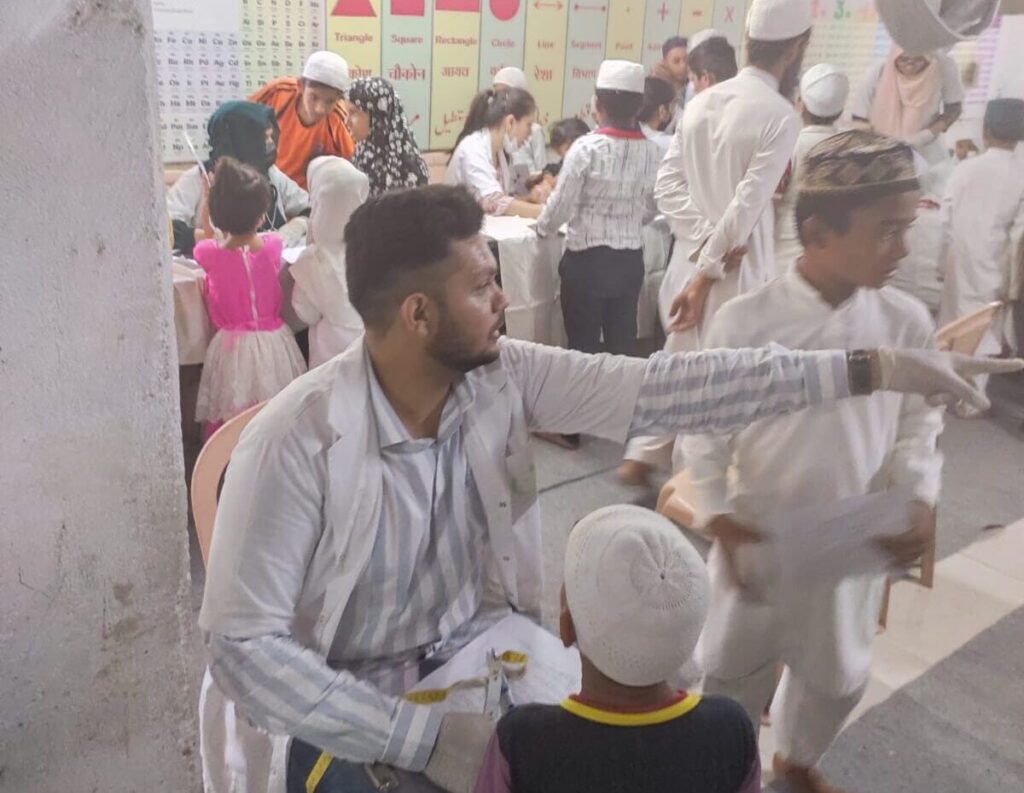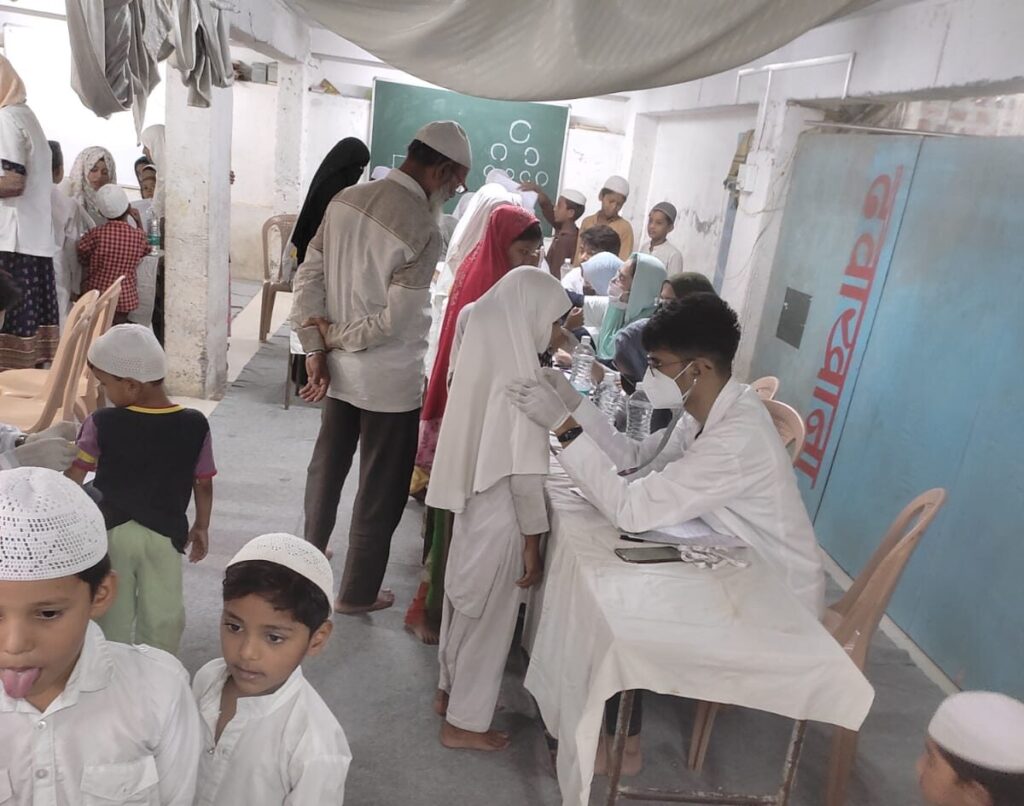CHILD HEALTH SURVEY- 2022 (MISSERWADI)

Malnutrition Pattern Among Children Residing in an Urban Slum of Aurangabad, Maharashtra.
Introduction:
India is a growing nation in terms of economy, but childhood mortality due to
malnutrition is still a major problem in both urban and rural areas, especially amongst poor
urban slum dwellers. Identification of malnutrition is the first step towards paying heed to this
problem.
Materials and Methods:
This was a community-based cross-sectional study conducted among
300 children in the age group of 0-18 years in an urban slum area of Aurangabad , Maharashtra.
Anthropometric measurements were done using Salter’s weighing scale for weight assessment
and measuring tape for height measurement. The WHO Child Growth Standards, 2006
reference data was used for that particular age and sex to get height for age (stunting), weight
for age (underweight), and weight for height (wasting). Classification of Malnutrition was done
by using IAP Classification and Waterlow’s Classification.
Results:
Out of total 300 children, 170(56.66%) were boys and 130(43.34%) were girls. Most
of the male and female children were between 6-10 years of age. Malnutrition was found in
81/300 [27%] children. Garde I Malnutrition [IAP classification] was found in 32/300
[10.66%] children followed by grade II and grade III found in 8% and 6.33% children,
respectively. Obesity was also found in 6/300 [2%] children. No significant difference was
found in prevalence of malnutrition between male and female children. Categorization of
malnutrition, according to Waterlow’s Classification showed wasting among 12% (36/300),
female children and among 11% (33/300] male children.
Conclusion:
The overall prevalence of malnutrition was found to be high. There is a need to
survey slum areas to recognize childhood malnutrition in early stage in order to take necessary
steps to tackle this major public health problem.

Study of Morbidity Pattern Among Children Residing in Urban
Slum of Aurangabad, Maharashtra, India
Introduction:
Children are the future of a developing nation, and their health is a vital indicator
of their growth. School going children belonging to slums are more disposed to diseases due
to unacceptable and unsatisfactory living conditions. Hence, there is a need to identify them
and their health problems so that proper interventions can be installed to improve their quality of life.
Aim:
To asses the morbidity pattern of children living in an urban slum.
Materials and Methods: A community-based cross-sectional study was conducted among
children in the age group of 0–18 years in one of the urban slums of Aurangabad, Maharashtra.
The total population of the urban slum named Misarwadi is 20,400 with ten wards. The total
number of houses is 6306, which has a 0–18 year old population of 7621. The baseline survey
was conducted with the help of paramedical workers about the demographic composition of
the slum area. A total duration of six months (October 2021 to March 2022) was required for
doing this study. The calculated sample size required for performing this study was 261. A total
of 300 children between 0 and 18 years of age were enrolled in the study, consisting of
170(56.66%) males and 130(43.34%) females.
Results:
The overall prevalence of morbidity among these children was found to be 49.67%
(149/300). Malnutrition was the paramount morbidity found in 81(27%) children, followed by
dental caries 43(14.33), ARI 14(4.66%), viral fever 8(2.66%), eye problems (4 conjunctivitis
and 3 squint) 7(2.33), worm infestation 6 (2%), and diarrhoea 5(1.66%). We also observed
other morbidities like gingivitis, injury, dysmenorrhoea, juvenile diabetes mellitus, and
tonsillitis. Comparatively, the prevalence of morbidity among females was significantly higher
than that among males.
Conclusion:
The overall prevalence of various morbidities were found to be higher among
children residing in an urban slum. Regular health surveys, medical camps and treatment
facilities for children in slum areas are important, with special attention to the needs of female
children.
